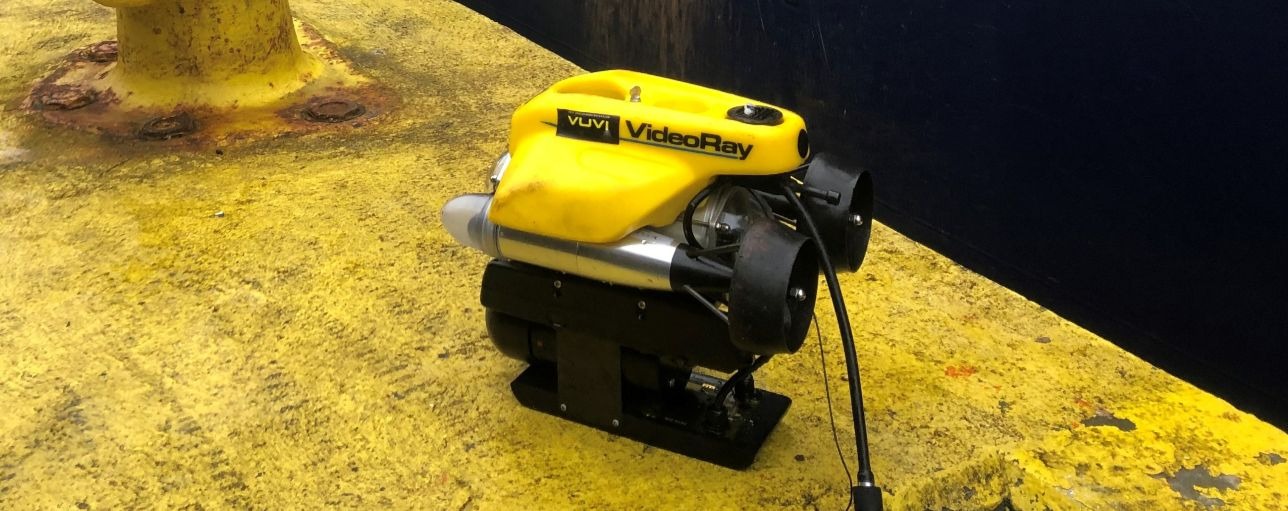In-water bottom surveys using ROVs have now been carried out on three separate Wilson ASA-managed vessels with the first having been completed on the Wilson Fedje in December 2019 by a surveyor from Høvik.
The latest in-water survey of this kind was performed earlier in July on another ASA Wilson-managed vessel in Bergen, Norway. Elias Triantafyllidis, the remote surveyor, attended the survey from the DNV GL DATE (Direct Access To Experts) hub in Piraeus, Greece.
As with the two previous surveys, it was conducted in collaboration with VUVI AS, a Norwegian inspection company certified by DNV GL to perform underwater inspections for ships and offshore platforms using ROVs.
“We are delighted to have collaborated with VUVI and Wilson ASA to deliver this exciting new approach to remote surveys,” said Knut Ørbeck-Nilssen, CEO of DNV GL – Maritime. “DNV GL has been carrying out remote surveys since 2018, so this service is an extension of a broad suite of remote services that are already available.”
Ørbeck-Nilssen added: “Naturally, the pandemic has pushed us to scale up the intensity of remote service delivery and we are fortunate that our longstanding commitment to digital advancement has meant we are well positioned to respond to the needs of our customers during this difficult time.”
Survey planning and review of hull drawings were completed the day prior to the survey, thereby optimizing the degree of survey assurance. During the inspection, the surveyor used VUVI’s sonar technology to scan the vessel’s bottom in order to locate the hull equipment, such as echo sounder sensors; speed log sensors and sea chests, while simultaneously assessing the general condition of the hull.
Seamless connectivity was ensured throughout the survey thanks to the use of a powerful router. The in-water survey was concluded in a similar timeframe to traditional surveys, i.e. two-and-a-half hours, achieving the same level of assurance as an in-person survey. DNV GL’s digital industry platform Veracity was used by VUVI AS, DNV GL and Wilson ASA to ensure secure data transfer when saving and sharing the video stream from the remote survey.
“Working in a modern world, with technologies allowing us carry out a bottom-survey without deviation or off-hire, we are really enabling a huge potential for efficiency and environmentally friendly solutions,” said Thorbjørn Dalsøren, General Director of Wilson Ship Management. “We trust this will be adapted to several more of our operations, taking advantage of digital solutions.”
“VUVI AS has since the company was founded in 2013 focused on in-water survey of vessels as one of the company’s core services,” said VUVI CEO, Frode Rødølen. “We became DNV GL certified to perform in-water inspections in 2017, and re-audited earlier this year. We are proud to have become a trusted partner by DNV GL to perform inspections with our ROV teams, and we are inspired by the fact the we contribute in the shaping of the inspection-services for the future,” continued Mr. Rødølen.
Statutory and class regulations require two bottom surveys of a vessel within a five-year period, with an interval of less than 36 months in between. The certification of VUVI AS was conducted in accordance with Class Programme DNV GL-CP0484 for in-water inspections.
DNV GL has recorded a 33% uplift in the weekly number of remote surveys conducted compared to pre-pandemic levels. In total, DNV GL has now conducted an estimated 17,400 remote surveys worldwide since 2018 with on average 300 remote surveys being carried out every week.
























